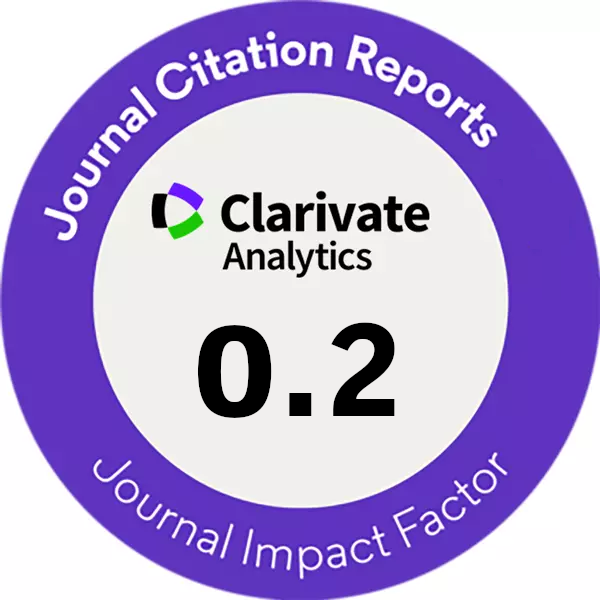FINITE ELEMENT SIMULATION ANALYSIS OF STEEL TRUSS ARCH BRIDGE JACKING CONSTRUCTION
DOI:
https://doi.org/10.14311/CEJ.2023.04.0039Keywords:
Steel truss arch bridge, Jacking construction method, Simulation analysis, Construction phaseAbstract
In this study, a spatial model of a steel truss arch bridge was established using the finite element software Midas/Civil to simulate and analyze the jacking construction process. The stress performance of the guide beam and main structure at each jacking stage was obtained. The results showed that in the first stage of jacking, the maximum stress and deflection values of the main girder were observed. The maximum stress on the upper edge of the main girder was 34.9MPa, and on the lower edge, it was -60.4MPa. The maximum deflection was -35.88mm. The maximum stress in the guide beam occurred during the jacking process and was -53.2MPa, corresponding to the cross-section at the root of the guide beam. The maximum deflection of the guide beam occurred in the maximum cantilever state and was -30.79mm. During the arch rib jacking process, the maximum stress was -49.4MPa. Both the maximum stress and deflection values were within the allowable range, indicating that the structure was in a safe state. This study provides a reference for similar bridge jacking construction projects.
Downloads
References
Li, F., Wu, P., and Yan, X. Analysis and monitoring on jacking construction of continuous box girder bridge[J]. Computers and Concrete, 2015, 16(1): 49-65.
Hu, Da, et al. Analysis and prediction of pavement settlement caused by jacking construction of ultra-shallow rectangular shield frame bridge[J]. Mathematical Problems in Engineering, 2020: 1-14.
Li, Jian, Zhigang Liu, and Peng Zhang. The hugest curved jacking pipe roof tunnel of Hong Kong-Zhuhai-Macao bridge[J]. ICPTT 2014: Creating Infrastructure for a Sustainable World, 2014: 422-431.
Ma, Fengbo, et al. Safety Monitoring of Bearing Replacement for a Concrete High-Speed Railway Bridge Based on Acoustic Emission[J]. Journal of Performance of Constructed Facilities, 2022, 36 (3): 04022014.
Zhang, Peng, et al. Key techniques for the largest curved pipe jacking roof to date: A case study of Gongbei tunne [J]. Tunnelling and Underground Space Technology, 2016, 59: 134-145.
Lu W, Li W, Field monitoring of a tunnel bridge during jacking construction”, 8th International Conference on Reliability, Maintainability and Safety. IEEE, 2009: 502-506.
Shen J K. Based on the Different Specifications of Jacking Construction of Continuous Girder Bridge Reliability Analysis[J]. Applied Mechanics and Materials, 2014, 584: 2017-2022.
Zhang H J, Peng Z Q, Li B L, et al. Control Technology on Jacking Closure Construction of Liangjiang Great Bridge[J]. Applied Mechanics and Materials, 2014, 587: 1430-1434,
Li P, Liu X, Dai Z, et al. Stability analysis of braced structures under jacking construction of large span steel truss bridges[J]. IOP Conference Series: Earth and Environmental Science. IOP Publishing, 2021, 861(7): 072064.
Xu L G, Wang Y L, Xu C J. Jacking technology for a simply supported girder bridge[J]. Applied mechanics and materials, 2014, 477: 675-680.
Chen Z, Yan Q S, Jia B Y, et al. Large Span Continuous Girder Bridge Jacking Steel Hoop Stress Analysis[J]. Advanced Materials Research, 2013, 671: 991-995.
He J, Gao X. Research of Synchronous Jacking up Construction Monitoring and Control Technologies of Bridge[J]. 2nd International Conference on Architectural, Civil and Hydraulics Engineering (ICACHE 2016). Atlantis Press, 2016: 39-44.
Wang, Zhichao, et al. Settlement characteristics of jacked box tunneling underneath a highway embankment[J]. Journal of Performance of Constructed Facilities, 2019, 33(2): 04019005.
Fan, Xin, et al. Construction Monitoring of Jacking Construction of Steel-Concrete Composite Beam in Self-Anchored Suspension Bridge[J]. Civil Engineering and Urban Planning 2012. 2012: 188-193.
de Boer, Jan. The benefits of jacking and skidding for rapid installation of under-and overpasses[J]. Structural engineering international, 2011, 21(4): 419-425.
Downloads
Published
Issue
Section
License
Copyright (c) 2023 Author

This work is licensed under a Creative Commons Attribution-NonCommercial 4.0 International License.
Authors who publish with this journal agree to the following terms:
- Authors retain copyright and grant the journal right of first publication with the work simultaneously licensed under a Creative Commons Attribution License that allows others to share the work with an acknowledgement of the work's authorship and initial publication in this journal.
- Authors are able to enter into separate, additional contractual arrangements for the non-exclusive distribution of the journal's published version of the work (e.g., post it to an institutional repository or publish it in a book), with an acknowledgement of its initial publication in this journal.
- Authors are permitted and encouraged to post their work online (e.g., in institutional repositories or on their website) prior to and during the submission process, as it can lead to productive exchanges, as well as earlier and greater citation of published work (See The Effect of Open Access).
How to Cite
Accepted 2023-12-14
Published 2023-12-31










